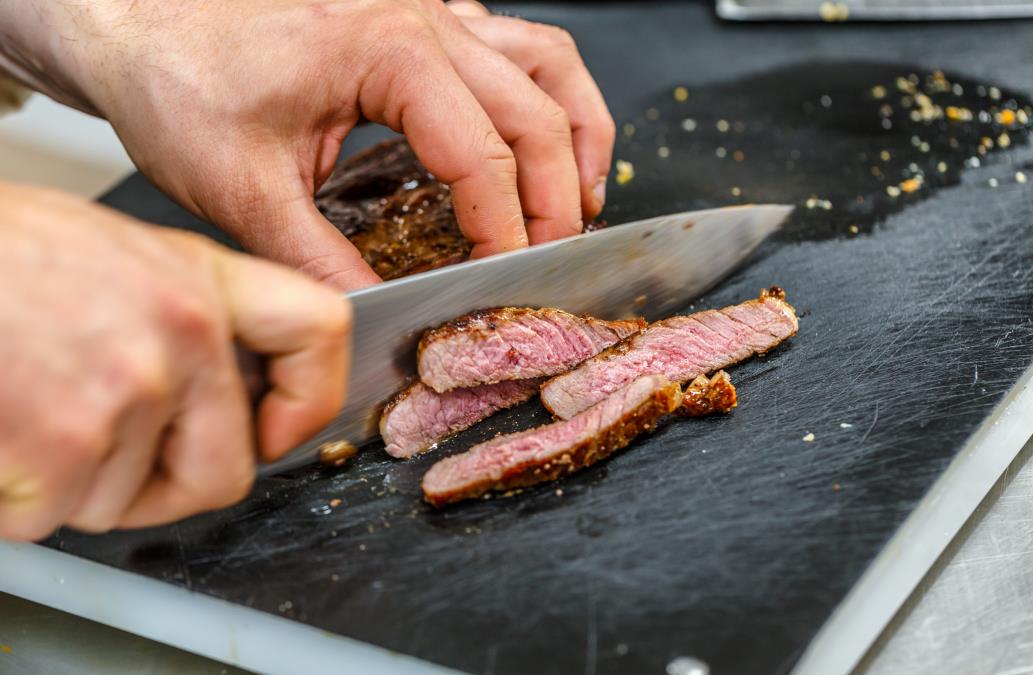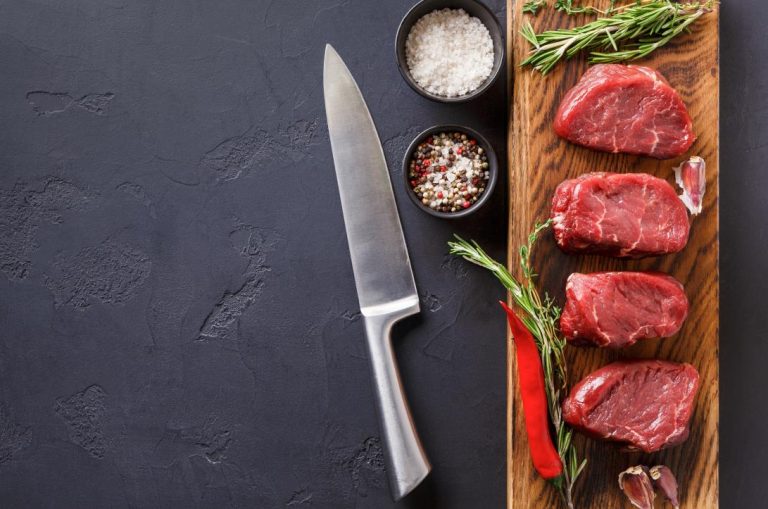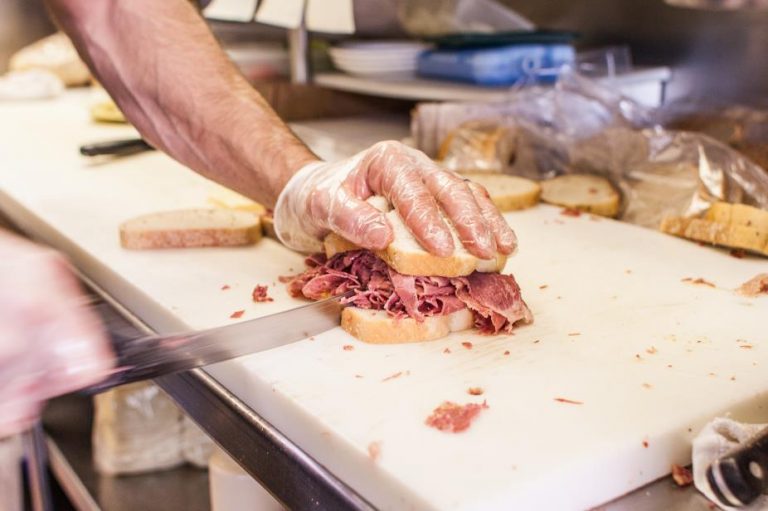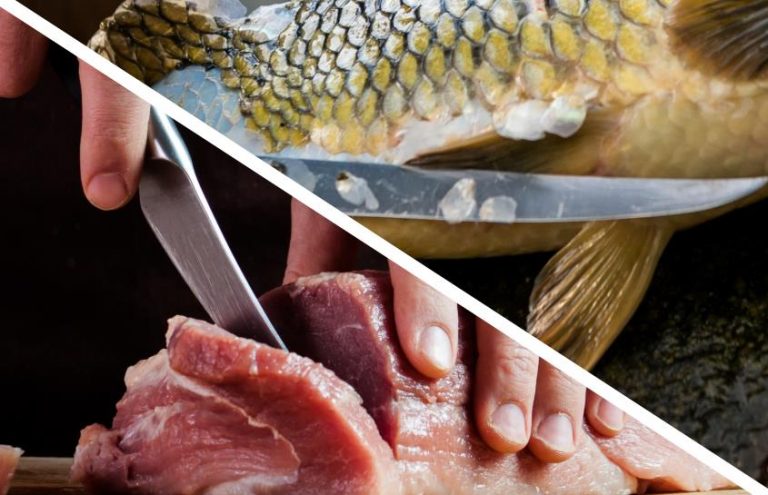Anyone involved in the retail of good quality knives would do well to follow industry thinking and look to the East for inspiration and success.
Two prime examples of knife industry successes are the Nakiri and Santoku. Varieties of Japanese kitchen knives. Both of these beauties have gained a loyal following over recent years and we’re going to show you why.
Stay tuned for our look at Japanese knife craft, the Nakiri and Santoku knives specifically, how they compare, what they’re used for in the modern kitchen, and how they each fit into the knife retailer’s product offering today.
What’s so great about Japanese knives?
The Nakiri and the Santoku are both Japanese knives, so let’s examine what makes Japanese knives so special so that we can understand these knife varieties better.
Bevel edge
Japanese knives have an extreme bevel edge (edge of the blade) that’s sharpened to around 15 degrees. By contrast, Western knives are usually sharpened to within about 20 degrees.
It seems like a small difference but that more extreme angle to the blade bevel gives Japanese knives a blade that’s thinner, meaning it’s sharper. A sharper blade slices through food without destroying its fibers, form, or texture. This is important especially on delicate food items.
Lighter and thinner
Compared to European knives, Japanese knives like the Nakiri and Santoku are lighter in construct with thinner blades. This means that they are easily manoeuvrable and user friendly.
Ease of motion
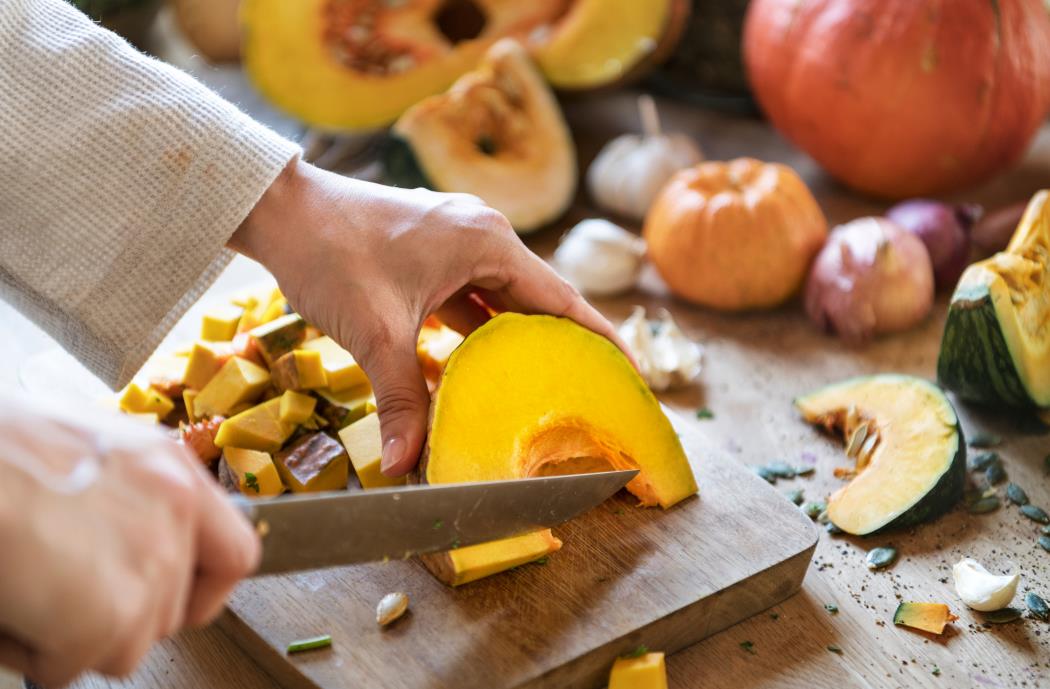
Whereas Western knives typically use an ‘up and down’ cutting motion, Japanese knives like Nakiri and Santoku rely on a draw cutting motion (slicing food towards you), or a rocking motion. This is economy of movement in practice and much less stressful for the cook, particularly if they’re cutting and chopping large volumes of food.
Beautiful balance
Japanese knives like the Santoku and the Nakiri are crafted with tactile feel and weighting in mind. This means that the knife molds to the hand well, is not too heavy, is evenly balanced, and offers a precise and direction led cut every time.
Superior steel
With Nakiri and Santoku knives you’ll see some of the world’s best steels being used in their manufacture. Using premium grade steel with carbon content means that a Japanese Nakiri or Santoku knife holds a sharp edge for a longer time, and that it’s easier to sharpen than its stainless – steel counterpart.
No bolster
Japanese knives like the Nakiri and Santoku will often lack a bolster (area between the blade and the knife handle). This makes sharpening the knife easier and it means that the user is able to use the full length of the knife’s edge without obstruction.
Japanese craftsmanship and stunning aesthetic
Purchasing a Japanese knife like a Nakiri or Santoku assures you and your customer of graceful design, thoughtful artistry and the very best in both cultural appreciation for excellence and manufacturing methods that have been honed over centuries.
Now let’s take a close look at our two shining examples of Japanese knife making at its finest!
Buy Wholesale Knives and Start Scaling up with Us Today
Contact us and connect with a sales rep to get a free quote.
The Nakiri knife
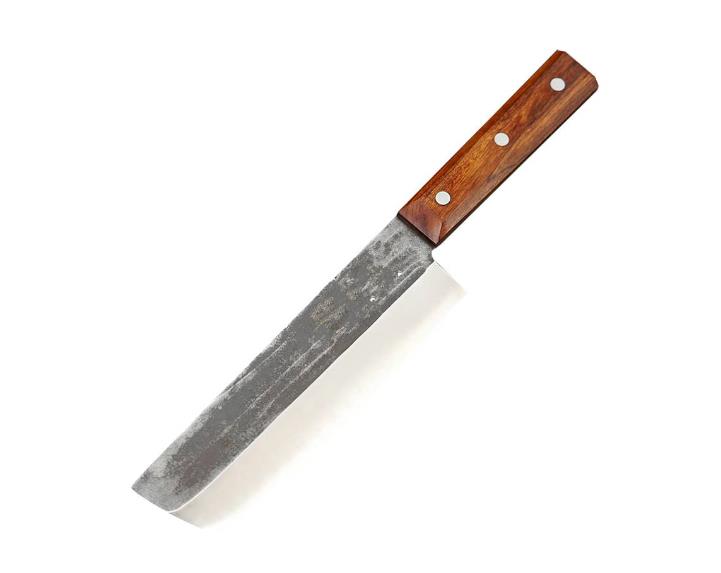
The Nakiri knife is Japan’s vegetable cutting and chopping knife and it’s seen big success in both Asian and Western markets.
With a long, thin, rectangular blade and a squared off tip to the blade edge the Nakiri looks like a smaller and more delicate Chinese cleaver. The Nakiri blade edge is straight all along its length, meaning that the whole edge touches the cutting surface simultaneously. This allows for a long or wide area of ingredients to be cut at once and lends itself to a swift and sure cut in one motion.
What is a Nakiri knife used for?
This vegetable knife is mainly used for the preparation of vegetables but it can also be used for:
- Chopping up large bunches of leafy or woody herbs
- Very fine cuts for garnishes and food art
- Slicing and chopping softer meats without bones
- Preparing fish and soft seafood items without shell or hard bones for sushi, sashimi or seafood dishes
- Paring cheese into slices or shapes for serving (a Granton edge is recommended for this)
- Cutting and shaping fruits
- The flat side of the blade lifts and transfers ingredients from the board easily
The Santoku knife
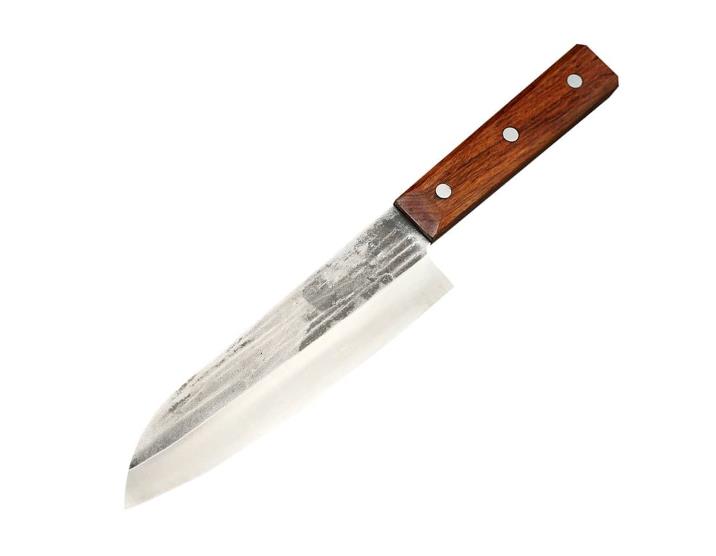
The Santoku knife is also of Japanese origin and also looks quite similar to a Chinese cleaver although it’s lighter in form. This knife has a long, thin rectangular blade with a rounded off tip to it.
The Santoku was developed as Japan’s answer to the European chef’s knife and it’s also designed to be a kitchen multi – purpose knife. Where the Nakiri shines mainly in vegetable prep, the Santoku takes on tasks that are a bit heavier and need a bit more force. For this reason, the Santoku can move across a range of ingredients, like
- Slicing vegetables, fruits and herbs
- Slicing denser meat items without large bones
- Cutting cheese (a Granton edge is recommended for this)
- Mincing of meats and things like garlic into pastes
- Slicing or mincing seafood and fish
- The flat side of the blade lifts and transfers ingredients from the board easily
As you can see from the information above, there is quite a bit of overlap between the Nakiri and Santoku knife. Both, if used with care and on appropriate ingredients can be multi – purpose, although the Nakiri will always be regarded first and foremost as a vegetable knife and the Santoku is seen as an all – rounder or a chef’s knife.
Comparison table
A clear table is a good way to assess information so let’s compare the Nakiri knife and the Santoku knife side by side!
| FEATURE | NAKIRI KNIFE | SANTOKU KNIFE |
| Country of Origin | Japan | Japan |
| Blade Length | 6 inches (average) | 6.5 inches (average) |
| Blade Shape | A long, thin rectangle with a squared off tip | A long, sheepsfoot blade with a rounded off point |
| Blade Edge | Straight edged throughout | Straight edged with slight curve |
| Weight | Around 8 ounces, depends on blade thickness | Around 7.5 ounces, depends on blade thickness |
| Edge Grind | Double bevel – 2 edge sides to the blade | Western style usually double bevel, Japanese style usually single bevel |
| Cutting Action | Straight up & down or draw cutting motion | Rocking motion comparable to chef knife technique |
| Main Use | Vegetables and fruits | Multi – purpose |
| Price Point | Less expensive on average than Santoku | More expensive on average than Nakiri |
Culinary purposes
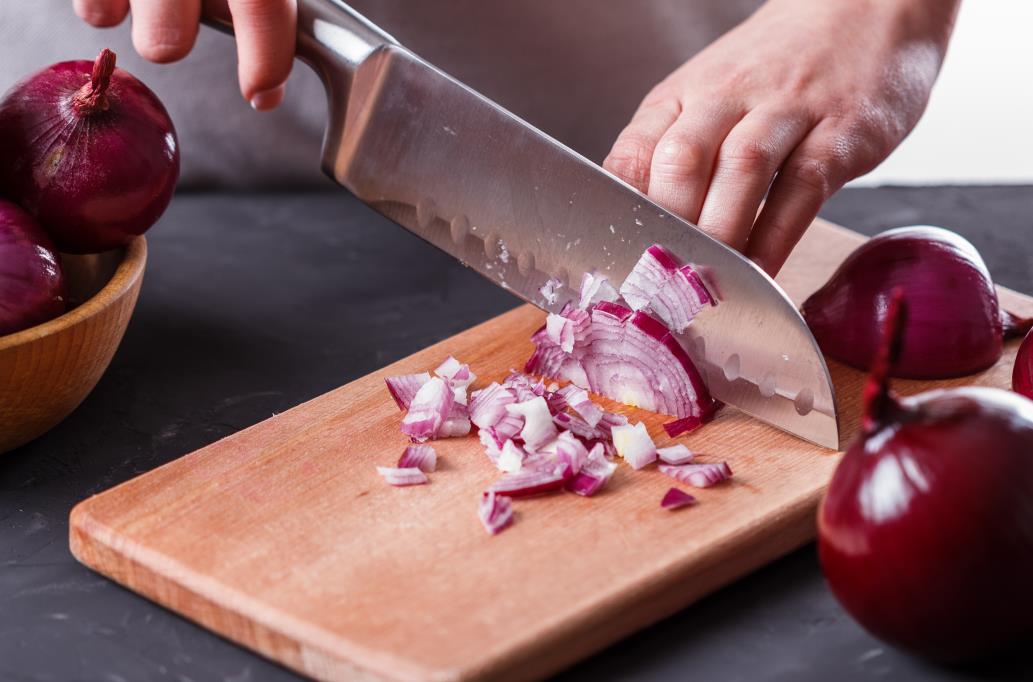
Both the Nakiri knife and the Santoku knife are so versatile in the modern – day kitchen and come into their own when a large volume of ingredients is prepared regularly.
For this reason, these knives have great application not just for the home cook but also for professional kitchens and industrial size food operations where ingredients are bought in untrimmed, unportioned or in their natural state and need to be prepared for serving in dishes.
Both Nakiri and Santoku knives would be a very good investment anywhere that a large quantity of food is prepared daily. Places like:
- Restaurants and hotels
- Cafeterias and dining halls
- School and university kitchens
- Military, air force and naval bases
- Spas, gyms, health or sports clubs
How are the Nakiri and Santoku knives similar?
As this article has clearly demonstrated, the Nakiri and Santoku knives have overlap. We’ve looked at some areas in which they differ, but now let’s look more closely at what similarities you could point out to your buyer.
Shape
Both the Nakiri knife and the Santoku knife are shaped in a rectangular form and both look like a smaller Chinese cleaver in appearance. If your customer is fond of the Eastern aesthetic, both types of knives offer an exotic, unique and most of all useful addition to the kitchen.
Level of maintenance and upkeep
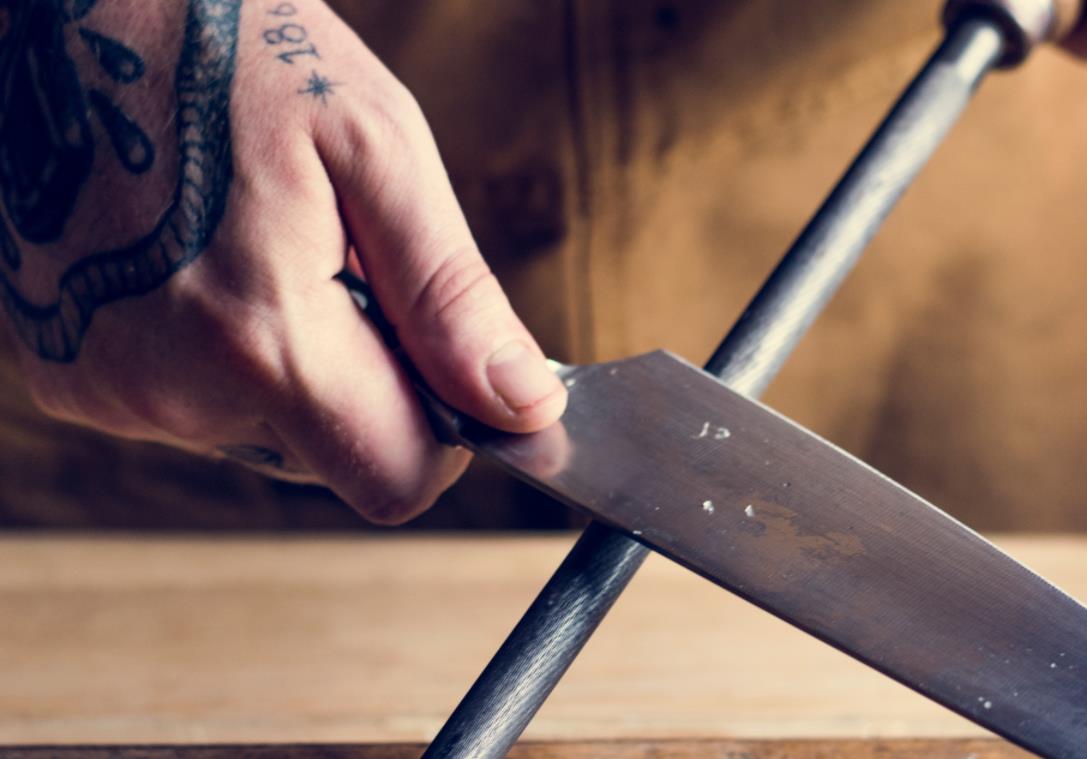
A Nakiri knife and a Santoku knife are comparable in terms of how easy they are to look after.
Neither the Nakiri or the Santoku require hard to get or expensive maintenance materials or sharpening tools. If care directions from the manufacturer are respected and these knives are treated with respect, you can be assured that your customer will have a long – lasting product that keeps its good looks over time.
Size and weight
The Nakiri and Santoku fit within roughly the same size and weight class, but a lot of variation is achievable within those parameters depending on customer requirements and likes. If your customer favors either a larger, weightier knife or a smaller and more delicate tool, the Nakiri and Santoku ranges will offer something to fill that need.
Customization
Both knives are available in stunning designs that cater to popular tastes. With an array of customization options for you to offer your customer, it’s easy to stay on top of industry and design trends whilst offering the best of ‘East meets West’ fusion.
The Nakiri and Santoku knife handles for example can be varied in material, shape and ergonomic factors, all adding up to a knife that’s so comfortable to use, safe in the hand, and beautiful to display and look at.
Industry leading steels
At LeeKnives, the buyer can have confidence that the steels used in the making of our Nakiri and Santoku ranges have a long industry record for performance and that they’re rigorously tested and fit acceptable grading standards before they’re used for our products.
Are Nakiri and Santoku knives good choices for a knife store?

Anyone who appreciates that Japanese knives are amongst some of the best in the world would want to include the Nakiri and the Santoku as part of their knife product offering.
With celebrity chefs and cultural trend setters giving Japanese knife ware the nod in mainstream media, it’s the smart marketer who’ll stay on trend and include these Eastern lovelies for sale to the discerning cook.
Are Nakiri OR Santoku knives more in demand?
Both of these knives are good sellers and to be fair, they’re for slightly different markets. Your Nakiri will excel where people are eating and preparing a largely vegetable based diet.
The Santoku knife is also very popular and so easily takes the place of the ‘go to’ chef’s knife that it’s a kitchen must have for just about any cook.
Neither can be discounted because you want to cover both segments of the market adequately and not get caught short in either area by not having the stock available.
In conclusion
These Japanese marvels, the Nakiri and Santoku knives, are super products that add exotic flavor and class to the knife seller’s armory of products.
Both can be sold confidently as they look gorgeous and very much deliver on performance too. We hope that this article has given you a good grounding of knowledge in both Nakiri and Santoku knives to use in the sales field.
We can’t wait to see you again on the LeeKnives blog. Interested in a reasonable quote on some stunning knives? We’ve got you covered, so just visit our quote portal and chat to us about what you need.
Take care and stay sharp friends!
